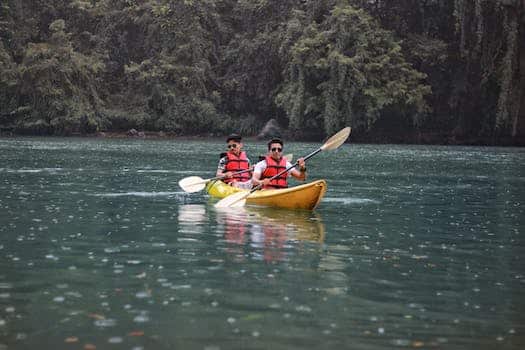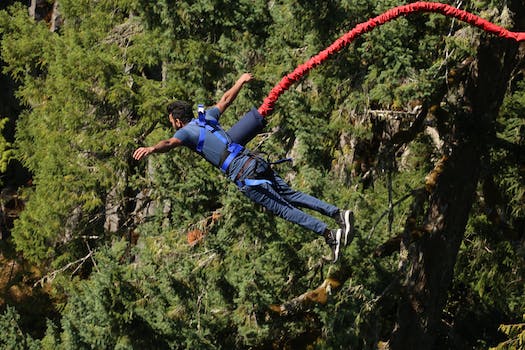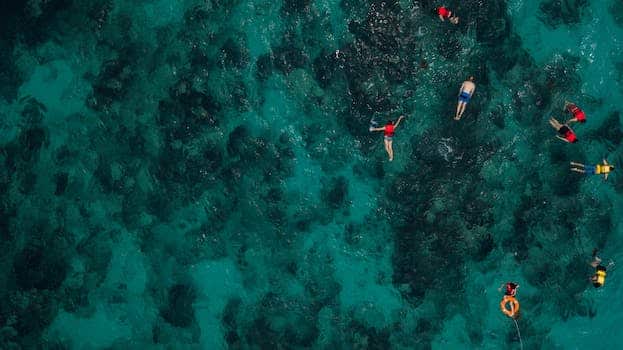A peaceful and amazing time can be had while kayaking on a lake. Make the most of your time on the water with the correct gear and attitude. If you want to make the most of your next kayaking trip on a lake, consider these 10 suggestions.
- 1. Preparing for Your Lake Kayaking Experience
- 1.1. Choosing the Right Kayak
- 1.2. Essential Gear to Bring
- 1.3. Understanding Weather Conditions
- 1.4. Safety Tips for Kayaking
- 1.5. Finding the Best Launch Site
- 2. Techniques for Successful Lake Kayaking
- 2.1. Paddling Techniques for Beginners
- 2.2. Maintaining Proper Posture
- 2.3. Navigating Through Rough Waters
- 2.4. Dealing with Wind and Waves
- 2.5. Avoiding Common Mistakes on the Water
- 3. Making the Most of Your Lake Kayaking Experience
1. Preparing for Your Lake Kayaking Experience
Before heading out on your lake kayaking adventure, it’s important to properly prepare. Here are a few things to keep in mind:
1. Check the weather forecast and plan accordingly.
2. Make sure you have all the necessary equipment, including a properly fitting life jacket.
3. Familiarize yourself with the lake’s rules and regulations.
4. Bring plenty of water and snacks to stay hydrated and energized.
5. Consider taking a kayaking lesson or practicing in a calm, shallow area before venturing out onto the lake.
6. Bring a waterproof bag or container to keep your belongings safe and dry.
7. Let someone know your planned route and expected return time.
8. Be mindful of other boaters and swimmers on the lake.
9. Respect the wildlife and natural surroundings.
10. Have fun and enjoy the beauty of the lake from a new perspective!
1.1. Choosing the Right Kayak
Picking the appropriate kayak is essential for a fun and safe time on the water. When choosing a kayak, it’s important to think about things like your experience level, the kind of water you’ll be paddling on, and how long your trip will be. Sit-on-top kayaks are popular among novices because of their simplicity and stability. For a more relaxed and enjoyable paddle, choose a recreational kayak. A sit-inside kayak with a skirt is recommended for kayaking in harsher waters like rapids or waves. Do your homework and try out a few different models before settling on a kayak.
1.2. Essential Gear to Bring
It’s crucial to pack carefully for a day of kayaking on the lake to guarantee your comfort and safety. You should think about packing a life vest, a paddle, a whistle, a dry bag, some sunscreen, some water, some snacks, and a few things to eat. It’s also a good idea to have a wetsuit or rain jacket in case you end up going out in the elements. Having these necessities with you will allow you to relax and enjoy your time on the lake without having to worry about your well-being.
1.3. Understanding Weather Conditions
Knowing the forecast is a crucial part of getting ready to go kayaking on a lake. The weather can change rapidly and unpredictably on the water, so it’s important to check the forecast before setting out. Storms, especially those with high gusts and heavy rain, can create hazardous circumstances for kayaking. On the other hand, a day with mild winds and bright sunshine can make for a fantastic kayaking adventure. If you plan on being outside for any length of time, it’s best to pack rain gear and a waterproof backpack in case the weather takes a turn for the worse.
1.4. Safety Tips for Kayaking
It’s crucial to think about safety before setting out on a kayaking trip on a lake. Some things to remember are listed below.
Always have a life jacket on hand while you’re near water.
Don’t leave without first checking the forecast.
Third, have some way of calling attention to yourself in case of an emergency.
Fourth, learn the lay of the land and its potential dangers.
5. Think about enrolling in a safety training course to acquire rescue expertise.
Paddle with a group or a buddy at all times, rule number six.
Seven, prepare for the worst-case scenario and know how to use a first aid kit.
Eight, make sure to bring lots of water and stay hydrated.
9 Tell someone where you’re going and when you anticipate to be back.
Tenth, be sure to abide by any regulations set forth by the lake or waterway you choose to kayak on.
1.5. Finding the Best Launch Site
Finding the correct launch point for your kayak is essential for a fun and safe lake kayaking adventure. Try to find a place to put your kayak in the water that has a mild slope or ramp so you can get in and out quickly. Also, think about whether you’d rather launch from a place with facilities like restrooms and picnic tables close by, or somewhere more remote. Also, be sure you have all the necessary permits and licenses to use the launch location. If you prepare for your kayaking trip in advance, you’ll have a much easier time getting started.
2. Techniques for Successful Lake Kayaking
Lake kayaking is a fun and exciting outdoor activity that allows you to explore the beauty of nature. To have a successful and unforgettable lake kayaking experience, it is important to follow some techniques. Firstly, before heading out on the lake, make sure to have the necessary kayaking equipment such as a life jacket, paddle, and kayak. It is also important to check the weather forecast and water conditions before setting out. Secondly, practice proper kayaking techniques such as maintaining a good posture, keeping your hands on the paddle correctly, and using the right strokes for different situations. Thirdly, always be aware of your surroundings and keep an eye out for any potential hazards such as rocks or strong currents. Fourthly, plan your route and make sure to let someone know where you are going and when you plan to return. Lastly, take time to enjoy the scenery and wildlife around you, but also respect the environment by not disturbing the natural habitat. By following these techniques, you can have a safe and enjoyable lake kayaking experience.
2.1. Paddling Techniques for Beginners
How to Paddle: Basic Skills
Learning how to paddle effectively is a must if you want to go kayaking on a lake. For those just starting off, here are a few pointers:
First, keep your hands shoulder-width apart as you grip the paddle.
Two, paddle by rotating your torso and keeping your arms straight.
Paddling will be more efficient and comfortable if you use a low-angle stroke.
Keep your paddle perpendicular to the water at all times.
5. Keep your course straight with a J-stroke.
Beginners can increase their effectiveness and command of their kayaks on the water by practicing these methods.
2.2. Maintaining Proper Posture
It’s important to keep your body in a neutral position while kayaking on the lake. Back pain, exhaustion, and other aches and pains can be avoided with the help of good posture. Keep your feet flat on the footrests and sit up straight to avoid back pain while kayaking. Keep your arms and shoulders erect without locking them. Use your abs and other core muscles to stay steady and upright. Take frequent breaks and get some stretching in to keep from getting tight and tired.
2.4. Dealing with Wind and Waves
Dealing with wind and waves while kayaking on a lake can be difficult. Keeping your kayak perpendicular to the waves and wind is crucial for safe navigation. This will help you stay on track and avoid swamping. Keeping a steady, regular rhythm when paddling can also help you keep your bearings in rough water. You should also account for the wind’s direction when planning your path. Following these guidelines will help you have a safe and enjoyable kayaking trip on the lake, regardless of the weather conditions.
2.5. Avoiding Common Mistakes on the Water
While kayaking on a lake can be a fun and relaxing activity, there are a few mistakes you should avoid making to ensure you have a good time. Inappropriate behavior includes not using a life vest. A life jacket is essential, even if you’re a skilled swimmer, because the unexpected always happens. Another bad idea is to head out without first checking the weather report. It’s crucial to be aware of and ready for any potential weather threats while out on the lake, especially sudden storms. Last but not least, remember to be courteous to other watercraft operators. Keep an eye on your surroundings and don’t annoy the other boats by approaching too near to them.
3. Making the Most of Your Lake Kayaking Experience
Lake kayaking is an exhilarating and invigorating pastime that welcomes paddlers of all ages and experience levels. There are a number of things you can do, whether you’re a novice or an expert kayaker, to get the most out of your time on the lake. Here are some suggestions for making the most of your time on the water:
First, select a kayak that is suitable for the water conditions of the lake you intend to explore. For open water, a longer, narrower kayak is preferable, while a wider, more stable kayak may be more appropriate for placid, shallow lakes.
Second, get dressed: put on clothes that are suited for the event and the weather. Layer your clothes so you can remove or add pieces as needed.
Third, make sure you have a life vest, a paddle, and a whistle in case of an emergency. This is not only a good thing, but
3.1. Exploring Scenic Routes
One of the best ways to get the most out of your time on the water in a kayak is to paddle along scenic routes. Whether you’re a seasoned paddler or just getting started, seeing the world from the water’s perspective is something you won’t soon forget. However, deciding which path to choose might be difficult because there are so many options. If you’re planning a kayaking trip on a lake, here are some suggestions for finding the best picturesque spots.
3.2. Spotting Wildlife on the Water
Kayaking on a lake is not only a relaxing way to see the scenery, but also a fantastic way to see the species that calls the lake home. Keep a look out for waterfowl like ducks and geese, as well as larger birds like herons, eagles, and ospreys. Fish leaping out of the water and turtles basking on logs are also possible sights. You could see an otter or beaver if you’re lucky! Keep your distance from wild creatures and don’t interfere with their habitat.
3.3. Fishing Tips for Kayakers
Kayak Anglers, Take Note!
1. Pack the right gear, including a kayak-specific fishing rod, lures, and bait. You should also bring a kayak-mountable tackle bag.
Wear a lifejacket at all times and be alert of your surroundings to avoid danger. Before setting out, make sure the weather is favorable and that there are no water dangers that could endanger you.
Third, pick a good location, such a weed bed or a fallen tree, that provides structure or cover. Fish may be found in these regions.
Fourth, have patience; it may take some time to locate productive fishing areas or to receive a bite while kayak fishing. Relax and take in the sights while you wait for a snack.
Make use of stealth; kayaks are quiet and will not alarm fish as you approach. Gently paddle along and don’t make any jerky motions.
The sixth suggestion is to try out new methods.
3.4. Capturing Memorable Photos
Taking pictures is an integral aspect of any trip, and kayaking on a lake is no exception. There are several opportunities to take photographs that are simply breathtaking, thanks to the combination of the breathtaking natural surroundings and the unique perspectives afforded by being on the sea. If you want to take pictures while kayaking on a lake, consider the following:
To prevent water damage to your camera and other electronics, you should: 1. invest in a waterproof camera or case.
Use a variety of compositional techniques to highlight the lake’s attractiveness.
Third, take pictures during the golden hour, which occurs between sunrise and sunset.
Four, to give your photographs a sense of scale and excitement, have kayaks appear in them.
Five, use water’s reflections to your advantage to create striking images.
Get close to your subject for more personal images, rule No. 6.
Get close-ups of the local flora and fauna to flesh out your narrative, number seven.
Experiment with various post-processing techniques to bring out the best in your photographs.
9. Don’t let your obsession with photography overshadow your enjoyment of the moment.
Ten. Fire away and have a good time.
3.5. Enjoying a Relaxing Day on the Lake
One of the best ways to relax and recharge is by going kayaking on a lake. Whether you’re an experienced paddler or just starting out, a day on the water is a great way to relax and get in touch with the natural world. Here are some suggestions for making the most of your time on the water with a kayak:
Conclusion
In summary, if you follow these 10 guidelines, you’ll have a fantastic time kayaking on a lake. Have fun and appreciate the natural beauty around you, but never forget to put safety first and treat the environment with respect.





